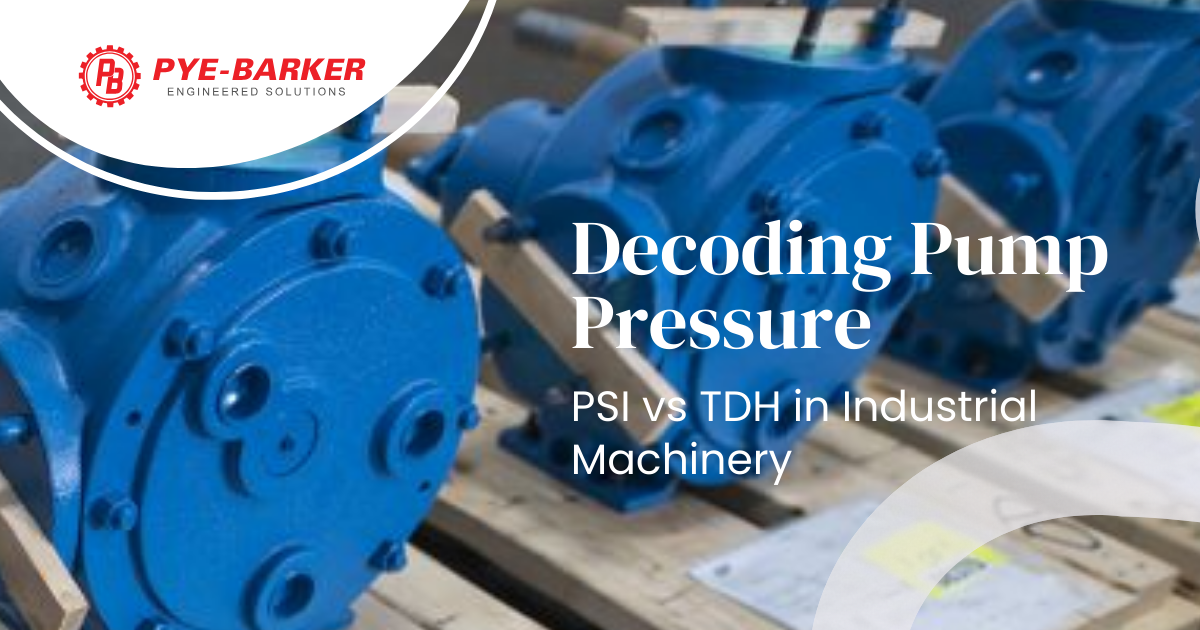
In the industrial realm, understanding pump pressure is pivotal for engineers and technicians. At Pye-Barker Engineered Solutions, we delve into the two fundamental measures: PSI (Pounds per Square Inch) and TDH (Total Dynamic Head), demystifying their roles in optimizing the performance of industrial pumps, compressors, blowers, and vacuums.
PSI and TDH are key measures in pump pressure, each playing a crucial role in different types of pumps. PSI, commonly associated with positive displacement pumps, and TDH, typically linked to centrifugal pumps, influence the efficiency of various industrial machinery. Understanding how these terms are used interchangeably helps in optimizing performance and ensuring machinery operates efficiently.
PSI, often expressed as PSIG (Pounds per Square Inch Gauge), is a significant measure in positive displacement pumps. It involves understanding gauge pressure and its variations, including negative pressure measured in inches of mercury vacuum (HgV). This knowledge is essential for precise control and optimization of pump operations.
For a deeper insight into pump pressure, check out our comprehensive guide at Pye-Barker Engineered Solutions Pump Pressure Descriptions.
To optimize your industrial machinery, connect with Pye-Barker Engineered Solutions at sales@pyebarker.com or reach our dedicated Customer Service team at (404) 363-6000.
Understanding the nuances of PSI and TDH is crucial for the optimal performance of industrial pumps and related machinery. By distinguishing between these measures and applying them correctly, engineers and technicians can ensure efficient and effective operation.
1. What is the difference between PSI and PSIG? PSI refers to Pounds per Square Inch, while PSIG refers to Pounds per Square Inch Gauge, which accounts for atmospheric pressure.
2. Why is TDH important in centrifugal pumps? TDH measures the total height a pump can raise fluid, crucial for determining pump efficiency in centrifugal pumps.
3. How does negative pressure relate to PSI? Negative pressure, often measured in inches of mercury vacuum (HgV), indicates a vacuum or pressure below atmospheric pressure.
4. Can PSI and TDH be used interchangeably? While related, PSI is typically used for positive displacement pumps and TDH for centrifugal pumps; they measure different aspects of pump performance.
5. How can Pye-Barker Engineered Solutions help with pump optimization? We provide expertise and solutions for optimizing industrial pumps, ensuring they operate at peak efficiency.



Notifications